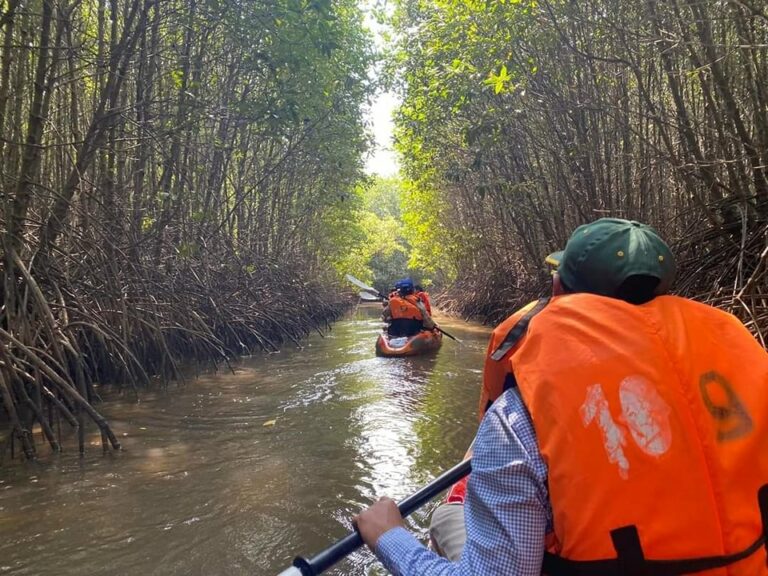The tourism industry is a significant contributor to global carbon emissions, with transportation being a major source of these emissions.

The UN World Tourism Organization estimates that transport-related carbon dioxide (CO2) emissions from tourism will grow 25% between 2016 and 2030, from 1,597 metric tons (Mt) of CO2 to 1,998 Mt of CO2. This surge in CO2 emissions will represent over 5% of all man-made emissions in 2030.
This puts tourism stakeholders in the Greater Mekong Sub-Region (GMS) in a bind: while the region wants to see the tourism industry rebound to pre-pandemic levels and beyond, they also recognize the need to reduce the carbon footprint of tourism activities.
Adopting electric vehicles (EVs) is one way to achieve this goal. EV adoption is already sweeping the global transport sector, and GMS stakeholders should lean into the trend. If they do, they can expect to reduce the regional tourism sector’s contribution to climate change effects, while also promoting sustainable practices that can mitigate pollution in the short term and climate change in the long term.

Thailand has institutionalized carbon-neutral tourism through its Bio-Circular-Green Economy (BCG) model; government organizations have wholeheartedly embraced BCG, through agreements like the “Carbon Balance Scheme” signed by Designated Areas for Sustainable Tourism Administration (Dasta), Tourism Authority of Thailand (TAT), Thai Ecotourism & Adventure Travel Association (TEATA), among others.
Under the Carbon Balance Scheme, TEATA piloted an EV caravan spanning the Bangkok-Samut Songkhram corridor: the first in several envisioned net-zero-balance tours where CO2 emissions are minutely recorded (down to the food eaten and the waste generated), and minimized by design.
In the near future, all such tourist caravans will emit zero net CO2 emissions, in large part due to using emissions-friendly EVs as transportation. This goal dovetails into Thailand’s larger goal of becoming a carbon neutral country by 2050: accordingly, the government plans to boost EV market share to 69% by 2035.
Other Mekong Sub-Region countries are blazing their own EV path as local capacity allows. Myanmar, for example, is implementing a one-year EV pilot project using up to 40 Chinese-made electric cars. Under the project, ten BYD e2* cars will work as electric taxis in Yangon, with another ten doing the same in Nay Pyi Daw.
* The BYD e2 is an electric vehicle compact hatchback

Viet Nam is also running its own EV taxi pilot in the capital Hanoi, launched by fledgling transportation company Green SM Taxi. The company is owned and operated by Green and Smart Mobility Joint Stock Company (GSM), a company with ties to Vietnamese EV maker VinFast.
In the first phase starting on April 14, Green SM Taxi will operate 500 VF e34 vehicles and 100 VF 8 vehicles in Hanoi. All vehicles are made by Vinfast, all painted in an eye-catching electric cyan hue. Eventually, Green SM Taxi forecasts EV taxi operations in five provinces and cities across Vietnam by end 2023.
In the Mekong Sub-Region, a number of factors are helping to bring EV tourism transport to critical mass: the vulnerability of the region’s coastal regions and islands to climate change; rapid advancements and decreasing costs of EV technology; and the competitive advantage it provides for environmentally-conscious tourists. More tourist stakeholders in the region are realizing that EV dominance in tourism is not a matter of “if”, but “when”.





